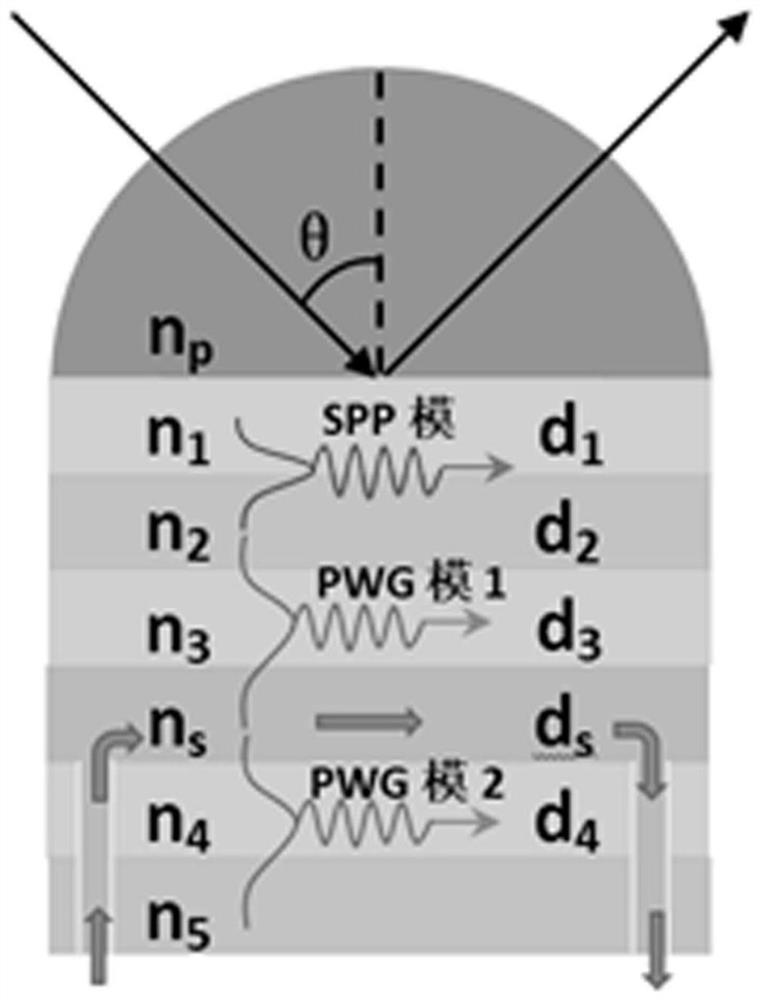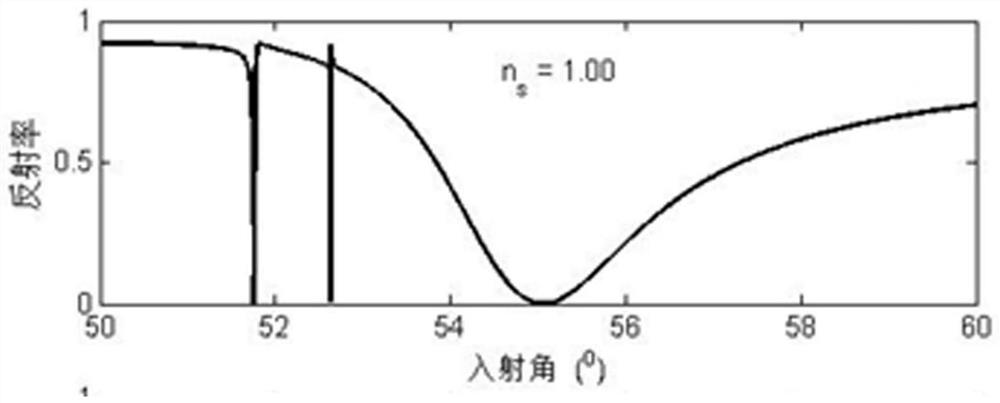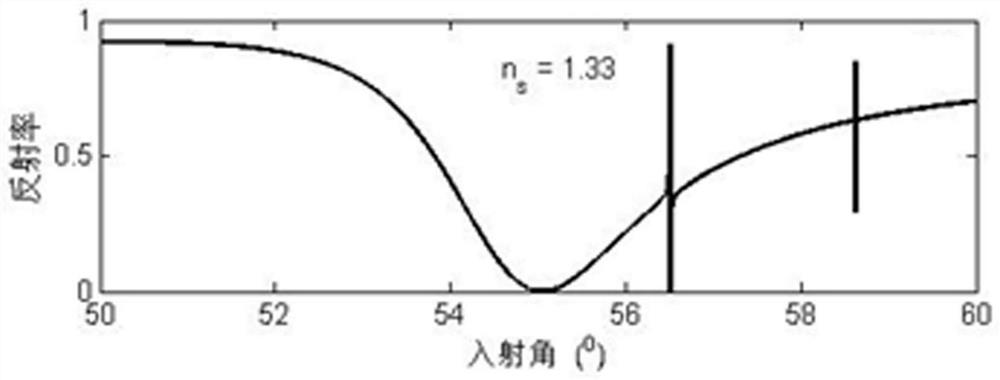A Surface Plasmon Resonance Sensor Based on Biplanar Waveguide Coupling
A surface plasmon and resonant sensor technology, which is applied in the field of light sensing, can solve the problems of high loss, Q factor and low sensitivity of SPR sensors, and achieve wide detection range of sensing refractive index, fast real-time detection speed and process flow. uncomplicated effect
- Summary
- Abstract
- Description
- Claims
- Application Information
AI Technical Summary
Problems solved by technology
Method used
Image
Examples
Embodiment 1
[0033] like figure 1 As shown, a SPR resonant sensor based on biplanar waveguide coupling, from top to bottom is SF11 prism, gold, fluoropolymer, zirconia, sensing layer, zirconia and fluoropolymer, the most The thickness of the upper layer and the lowermost layer can be regarded as semi-infinite thickness, and the thicknesses of the middle layers from top to bottom are respectively set to 48, 895, 110, 371, and 115 nm. The upper Cytop, ZrO2 and sensing layer constitute the first planar dielectric waveguide (referred to as PWG1), and the sensing layer and the Cytop and ZrO2 below constitute the second planar dielectric waveguide (referred to as PWG2). The sensing analyte is delivered through the pipeline.
[0034] When a beam of TM polarized light with a wavelength of 633nm enters the prism and enters the medium through the Au film, a surface plasmon polariton (SPP) mode is generated at the interface between the gold layer and the medium, and its effective refractive index is...
PUM
| Property | Measurement | Unit |
|---|---|---|
| thickness | aaaaa | aaaaa |
| thickness | aaaaa | aaaaa |
| thickness | aaaaa | aaaaa |
Abstract
Description
Claims
Application Information
 Login to View More
Login to View More - R&D
- Intellectual Property
- Life Sciences
- Materials
- Tech Scout
- Unparalleled Data Quality
- Higher Quality Content
- 60% Fewer Hallucinations
Browse by: Latest US Patents, China's latest patents, Technical Efficacy Thesaurus, Application Domain, Technology Topic, Popular Technical Reports.
© 2025 PatSnap. All rights reserved.Legal|Privacy policy|Modern Slavery Act Transparency Statement|Sitemap|About US| Contact US: help@patsnap.com



